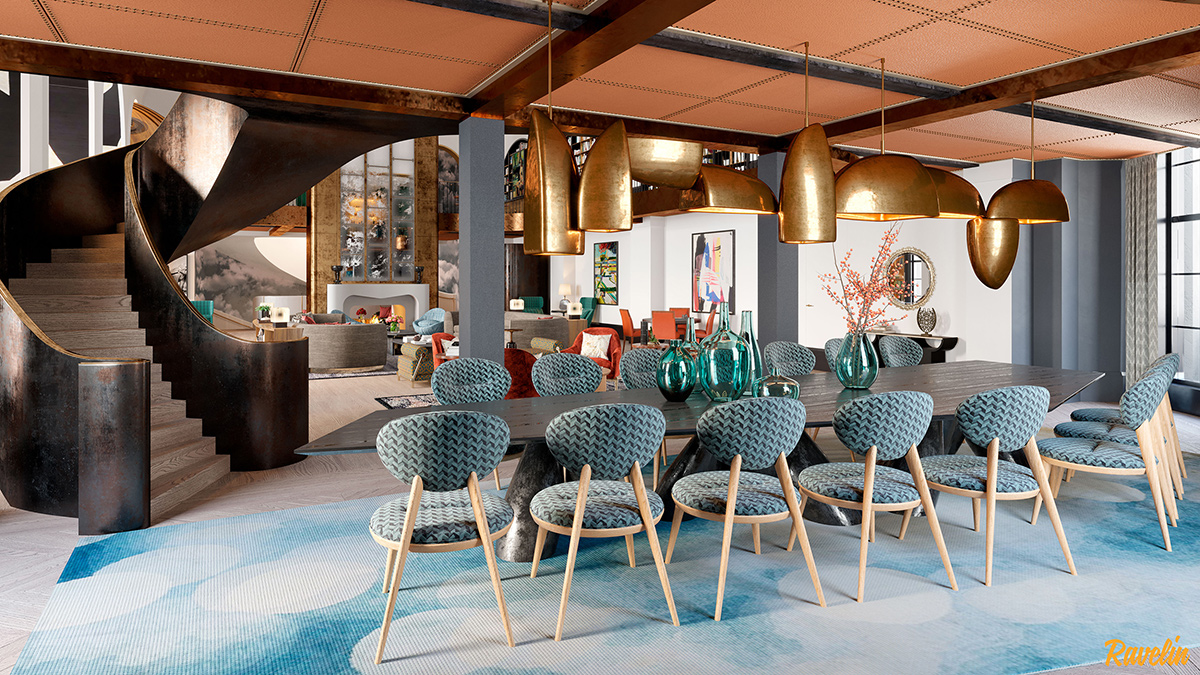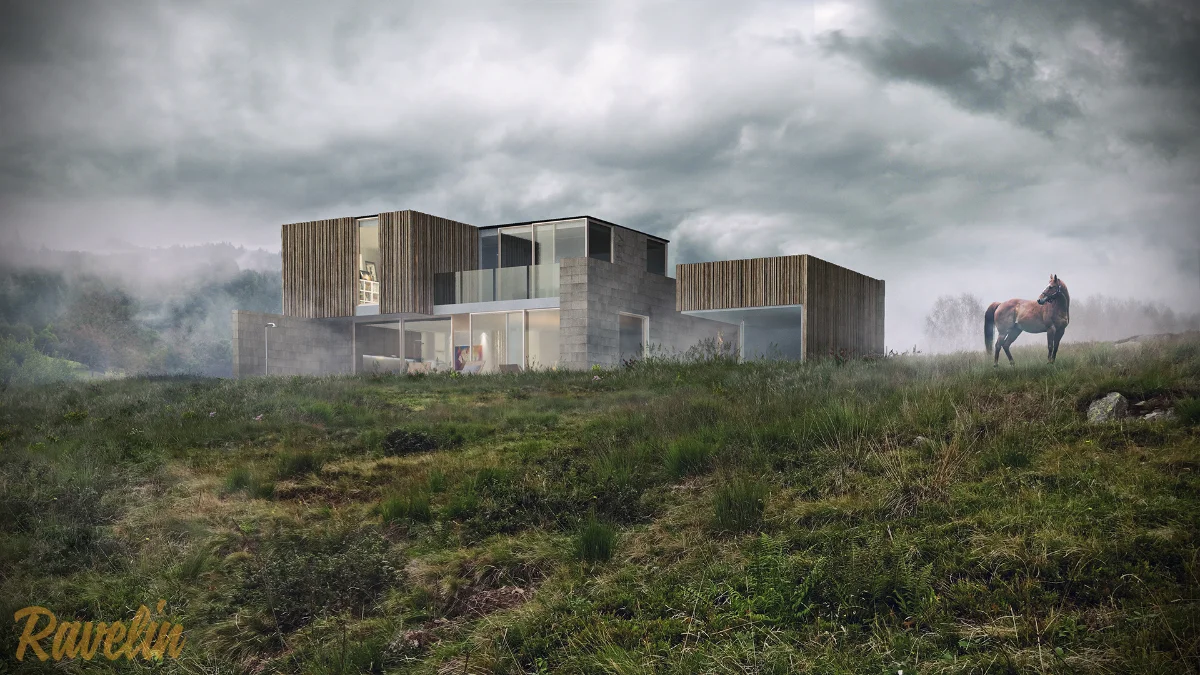Guide to 3D Animation Walkthrough in Architecture
Imagine walking through a building that hasn’t even been built yet—strolling through sunlit hallways, stepping onto panoramic balconies, and feeling the grand scale of spaces before a single brick is laid. That’s the magic of 3D animation walkthroughs. Unlike static renders, these animations create a cinematic experience, guiding clients, investors, and city planners through the architectural vision with unparalleled clarity.
Introduction to 3D Animation in Architecture
What is Architectural 3D Animation?
Imagine walking through a building that hasn’t even been built yet—strolling through sunlit hallways, stepping onto panoramic balconies, and feeling the grand scale of spaces before a single brick is laid. That’s the magic of 3D animation walkthroughs. Unlike static renders, these animations create a cinematic experience, guiding clients, investors, and city planners through the architectural vision with unparalleled clarity.
Why is 3D Animation Important for Architecture and Real Estate?
Static images can capture a design’s beauty, but they fail to tell its full story. A 3D walkthrough animation does more—it breathes life into architectural concepts, creating an emotional connection with viewers. For architects, it means effortless communication with stakeholders. For real estate developers, it translates into faster approvals and increased pre-sales.
Key Benefits of Using 3D Animation in Architectural Presentations
Immersive storytelling – Showcase a project’s ambiance, lighting, and spatial flow dynamically.
Enhanced decision-making – Clients understand dimensions, materials, and layouts in a way blueprints never could.
Competitive edge – High-quality walkthroughs differentiate top-tier firms from the rest.

Types of 3D Animation Used in Architecture
Flythrough Animation
A bird’s-eye view of architectural wonders—flythrough animations provide sweeping perspectives of master plans, urban developments, and commercial projects. They’re ideal for large-scale real estate marketing and investor pitches.
Walkthrough Animation
Unlike flythroughs, walkthrough animations put the viewer inside the building, moving them through hallways, rooms, and open spaces. Every step showcases intricate details—the texture of wooden floors, the shimmer of glass facades, the interplay of natural light.
Virtual Reality (VR) and Interactive Animations
Step inside a design with VR-powered walkthroughs. Clients don’t just watch—they explore, making real-time design adjustments. Interactive animations are changing the game for architects, interior designers, and real estate developers.
3D Motion Graphics for Architecture
Sometimes, architectural storytelling needs a touch of dynamism—animated text, data overlays, and graphical elements that enhance presentations. These are especially useful for urban planning and commercial real estate pitches.
Time-Lapse and Construction Sequence Animations
Show the journey from blueprint to reality. Construction animations illustrate how a building will come to life step by step, making them perfect for project planning and investor confidence.

How 3D Animation Enhances Architectural Presentations
Visualizing Unbuilt Projects in Photorealistic Detail
Ever tried explaining a space without visuals? It’s like describing a sunset in black and white. Walkthrough animations bring realistic lighting, weather conditions, and material finishes into play, making abstract concepts tangible.
Improving Communication Between Architects and Clients
Misinterpretations can delay projects and inflate costs. A 3D walkthrough ensures every stakeholder—from designers to investors—sees the same vision, reducing back-and-forths.
Enhancing Real Estate Marketing Strategies
Properties sell faster when buyers can experience them. Real estate firms leverage high-quality walkthrough animations to attract buyers, boost engagement, and close deals before construction even starts.
Supporting Urban Planning and Large-Scale Developments
Cities aren’t just built; they’re designed for the future. 3D walkthroughs assist in visualizing traffic flows, green spaces, and urban functionality before breaking ground.

Essential Tools and Software for Architectural 3D Animation
Top 3D Animation Software for Architects
- Autodesk 3ds Max. A powerhouse for high-end animations, 3ds Max is favored for its versatility and realism.
- Blender. An open-source gem, Blender offers cutting-edge animation tools for architects who want cost-effective solutions.
- Cinema 4D. Perfect for adding motion graphics and smooth animations in architectural presentations.
- Lumion. Renowned for speed and ease of use, Lumion is a go-to for architects wanting quick, high-quality renders.
- Unreal Engine and Twinmotion. For real-time rendering and VR walkthroughs, these engines deliver interactive experiences with cinematic realism.
Best Rendering Engines for Architectural Animations
- Chaos V-Ray. The gold standard for photo-realistic architectural rendering.
- Corona Renderer. A go-to for interior animations thanks to its superior lighting simulation.
- Redshift. A GPU-accelerated renderer, ideal for fast-paced architectural projects.

The 3D Animation Production Process
Concept and Storyboarding
Every great animation starts with a compelling narrative. Architects and animators plan the journey—highlighting key spaces, angles, and movements.
3D Modeling and Scene Setup
From blueprints to digital 3D models, this step ensures architectural accuracy and visual appeal.
Lighting and Texturing
Just like in real life, lighting sets the mood. Proper texturing brings surfaces to life—whether it’s a polished marble floor or a weathered brick wall.
Camera Movements and Animation Techniques
Subtle camera glides create an elegant flow, while dynamic angles add excitement. It’s all about rhythm and emotion.
Rendering and Post-Production
Rendering transforms raw 3D models into stunning, lifelike animations. Post-production adds final touches—color correction, motion blur, and sound design.

Future Trends in Architectural 3D Animation
AI-Powered Animation and Automation
Artificial Intelligence is streamlining rendering, modeling, and even animation sequences.
Real-Time Rendering and Virtual Reality
Instant visualizations are becoming the new norm with Unreal Engine’s real-time rendering capabilities.
Integration of 3D Animation with Augmented Reality (AR)
Clients can now overlay 3D models onto real-world environments—blurring the lines between virtual and physical architecture.
Sustainable and Energy-Efficient Visualization Techniques
Green visualization tools ensure eco-friendly architecture is showcased with sustainable practices in mind.
Conclusion
The Growing Role of 3D Animation in Architecture
From design approvals to real estate sales, 3D walkthroughs have revolutionized architecture.
How to Get Started with Architectural Animation
Want to elevate your projects? Ravelin3D specializes in breathtaking architectural walkthrough animations that bring your designs to life. Let’s create something extraordinary—together.




